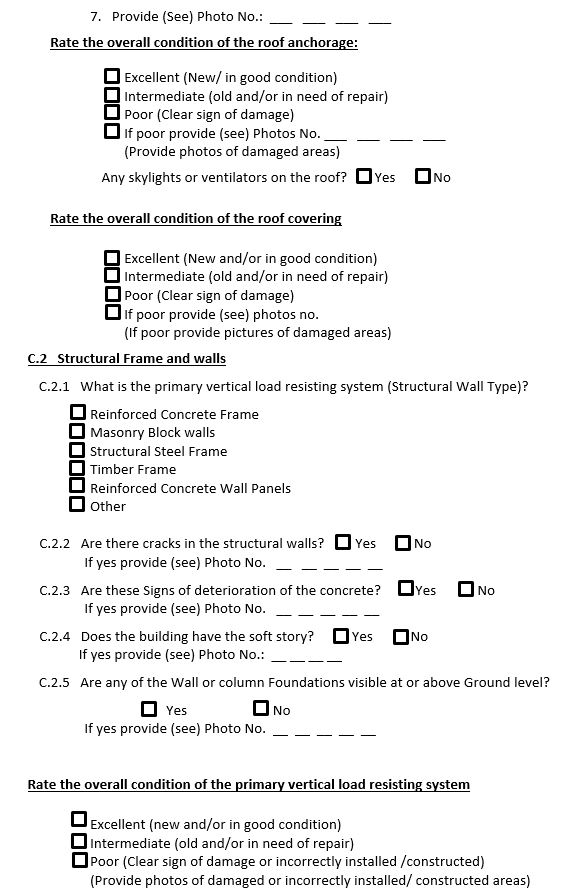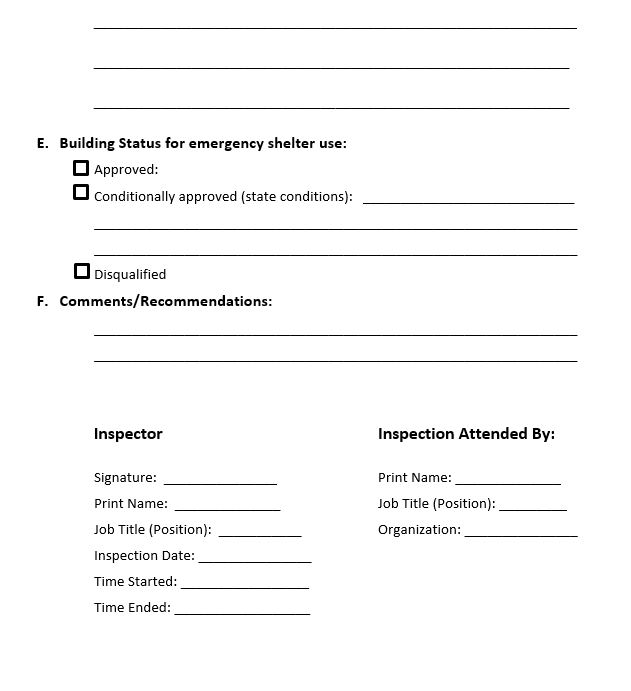Author: Naveed Anwar
Introduction
Shelters provide an interim replacement for the basic needs of residents affected by disasters and emergencies until they or their community are able to support a return to normal living conditions.
A shelter facility either can be designed or constructed solely as a shelter or it can be either used for emergency or for a post disaster situation. Emergency shelters are used when a hazard warning is issued, or a hazard is imminent, such as a hurricane, storm, flood or expected landslide or fire, when there is sufficient time to move the people to these shelters before or during the event.
A post disaster shelter is needed to accommodate people who may have lost their homes after a disaster or an event that may require a longer duration relocation into these shelters. It provides a means to a safe, sanitary, and secure environment.
Shelters must be designed and evaluated for higher standards compared to buildings with normal occupancy, as they are often essential during and after an extreme event when the buildings and other structures may become unsafe or un-usable. These shelters not only need to remain intact but operational and serviceable so they are able to handle additional live loads and demands due to the large number of people packed together along with their belongings.
The preferable solution to providing protection to residents is to build a new, separate building specifically designed and constructed to serve as a shelter. A potential advantage of a stand-alone shelter is its safe location, positioned away from potential hazards. However, incorporating the shelter into an existing building or a planned renovation or building project may reduce the shelter cost and may be easily accessible for area residents.
For wind storms and hurricane shelters, buildings must have strong roofs and cladding walls with doors and windows with proper locking and shutters. The shelter criteria may include requirements for multiple hazards, for example flood and hurricane, and or landslide and volcanic eruption. The criteria must also include considerations for accessibility to communities, duration of occupancy, security, proper ventilation, emergency escapes/exits, storage provisions for food, water and first-aids.
Primarily, shelters should be located outside of high-risk flood areas. When this is not possible, the structures should be located in the least hazardous portion of the area subject to flooding. Flood shelters need to be at higher elevation or buildings with habitable floors well above the expected flood level and strong enough to withstand the water currents and debris flow. Other flood design criteria for shelters can be referred to the Use Case Book Chapter 2 section 2.3 Guidelines for incorporating landslide and flood hazards in building construction.
The final shelter can be designated based on the recommendation of the evaluation agency. This may involve using the building as-is, or with recommended retrofit/modification. If proposed building(s) is found unsuitable, the evaluation agency may recommend to select an alternate building. This evaluation can be carried out using a basic site survey and multiple considerations. The evaluation process can also be formalized using Analytical Hierarchy Process (AHP)[1] to reduce subjectivity in the process.
[1] The Analytic Hierarchy Process (AHP) is a multi-criteria decision-making approach which can be used to solve complex decision problems. It uses a multi-level hierarchical structure of objectives, criteria, sub criteria, and alternatives.
Methodology
The overall process starts by first considering the types(s) of scenarios use-cases of shelters needed to be considered. There are many scenarios in which a shelter may be needed or may be used. Each scenario needs to be evaluated for its possible applicability for various hazards for a community. Some of the typical scenarios relevant to OECS countries.
Scenario 1:
Short term emergency in which shelter itself is not exposed to hazard.
Possible hazards are:
- Fire in nearby building
- Temporary security or safety risk
- A building or buildings in the community are damaged or become unusable by causes not directly related to natural hazards.
Possible Consequences:
This may be a possible scenario in many instances, as it covers both man-made and natural hazards and disasters. A simple designation of a school or church or other facility and by providing appropriate support and training can help to handle short time emergencies.
Scenario 2:
Emergency shelters from natural hazard that may also effect the shelter building itself.
Possible hazards are:
- Flood
- Hurricane, storms, blizzards
- Landslide, (local or minor)
- Volcanic eruptions (minor effect)
Possible Consequences:
This scenario may be most likely to occur, especially in the Caribbean states, where flood, landslides, and hurricane hazards are high and frequent. Effective preparation for this scenario may be considered while planning, selecting or designing the shelters, as well as disaster preparedness, management systems and training programs.
Scenario 3:
Long-term shelter for hazard or disaster that may also affect the shelter.
Possible hazards/disasters are:
- Earthquake
- Major landslide
- Major volcanic eruptions/lava flows
Possible Consequences:
In the absence of such a shelter, the community may be without a proper refuge for extended times. It must be emphasized that such shelters should be designed/evaluated to be functional for the hazards that effect the vulnerable buildings. However, this scenario has a low probability of occurring generally having a low probability of but could have major consequences. Temporary or semi-permanent shelters are constructed after such disasters which can later be dismantled or relocated.
Once the basic design scenarios are considered, the next important decision is whether the existing buildings or structures can be used/designated as shelters or, specifically designed and constructed shelters are needed, which could also be multipurpose.
Table 1 shows some of the pros and cons of using existing and new shelters, and their relevance to various scenarios and hazards.
| Designation of Existing Buildings | Construction of New Buildings | |
|---|---|---|
| Advantages |
|
|
| Disadvantages |
|
|
| Suitable for Scenarios |
|
|
| Suitable for Hazards |
Fire- High Flood - Medium Hurricane - High Landslide - Low Earthquake - Low Volcano - Low |
Fire - High Floods - High Hurricane - High Landslide - High Earthquake - Low Volcano - Medium |
Table 1: Designation of existing buildings vs construction of new shelters
Planning Considerations
Several considerations need to be taken into account while planning and selecting the shelters for various scenarios. Table 2 shows several such considerations including those for location, management services, facilities, and security operations.
| Planning Considerations | Scenario 1 | Scenario 2 | Scenario 3 |
|---|---|---|---|
| Building Considerations (Such as, Location, Capacity etc.) |
|
|
|
| Shelter user Registration and Information |
|
|
|
| Facility Management |
|
|
|
| Security, Building Access Control and Information Management |
|
|
|
| Food Service |
|
|
|
| Public Health, Medical & Mental Health Services |
|
|
|
| Children' areas |
|
|
|
| Other Considerations |
|
Table 2: Planning Considerations
The information need for the shelter will depend on the whether the special shelter/facility is to be designed or an existing building is to be converted to or designated as a shelter. The most common mechanism currently being adopted in most of the East Caribbean states is to designate existing public buildings, such as schools and churches as emergency shelters which are typically used for scenario 1 and scenario 2 cases. The procedure to select such shelters is described in use case 5.2 Shelter planning in use case book.
The information needed for the evaluation and selection of an existing shelter is listed in the Emergency Shelter Facility Survey and Assessment forms included in the annex. This simple form can be adapted for a particular state or region.
The main categories of information are summarized below:
- Proposed shelter data
- Building occupancy and general characteristics
- Structural characteristics of buildings
- Surroundings
- Past Damages
- Building status for emergency shelter use
References
MEGA-SHELTER PLANNING GUIDE. A Resource and Best Practices Reference by IAVM and the American Red Cross. October 1, 2010, www.iavm.org
Design and Construction Guidance for Community Shelters, FEMA 361, July 2000
Annex
Last update: 19-07-2016







